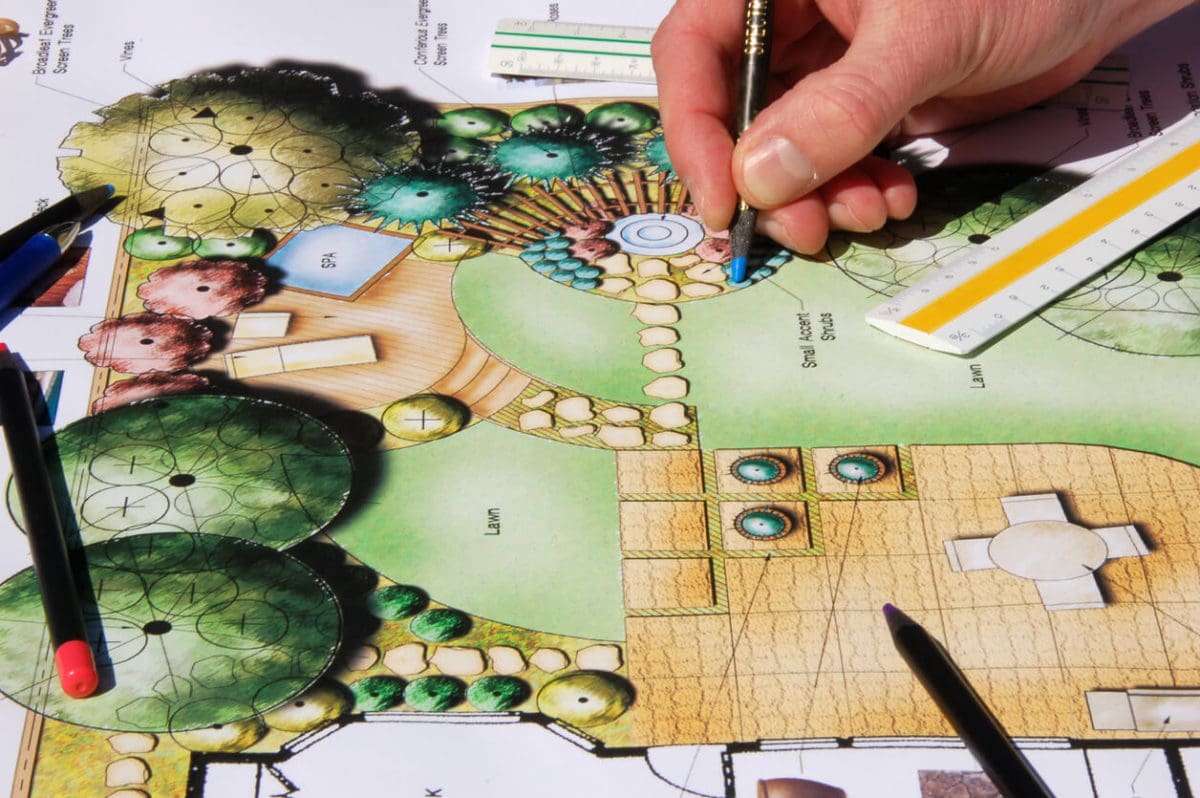Architect Tips for Planning Modern Residential Spaces
Architect Tips for Planning Modern Residential Spaces
Blog Article
Understanding the Diverse Occupation Paths Available for Aspiring Architect
As a hopeful Architect, you have a globe of career paths waiting for you. Whether you're drawn to typical architecture or the nuances of sustainable style, there's a niche that lines up with your passions.
Traditional Architecture: Designing Buildings and Frameworks
Typical architecture concentrates on creating structures and frameworks that blend performance with aesthetic charm. Your layouts can show cultural heritage, showcasing regional practices while meeting contemporary requirements.
You'll create skills in composing, model-making, and website analysis, allowing you to visualize and interact your concepts effectively. Involving with customers, you'll need to comprehend their vision and translate it right into viable designs.
Moreover, building codes and sustainability methods are essential in your work, guaranteeing your frameworks are environmentally friendly and risk-free. As you expand in your job, you'll discover opportunities in household, commercial, or also reconstruction jobs, each offering distinct obstacles. Accepting traditional style leads the way for a satisfying career that pays tribute to the past while shaping the future.
Urban Preparation: Shaping Neighborhoods and Public Spaces
As an aspiring Architect, you can play a necessary role as a metropolitan planner, changing just how neighborhoods connect and function. By using community interaction approaches, you'll ensure that homeowners have a voice fit their atmosphere. And also, integrating lasting layout principles will certainly aid create areas that not just meet today's demands yet also protect the future.
Duty of Urban Planners
While several could believe of designers as the sole visionaries behind structures, metropolitan planners play an important function in forming the more comprehensive landscape of neighborhoods and public rooms. By teaming up with different stakeholders, you'll help design parks, transportation systems, and household locations that promote social interaction and accessibility. Your proficiency in spatial layout and area dynamics allows you to picture future development while preserving social heritage.
Neighborhood Engagement Strategies
Reliable area engagement techniques are crucial for city organizers to assure that the voices of residents are heard and valued in the planning process. To foster significant discussion, you must focus on open discussion forums and workshops where area participants can share their concepts and concerns. By proactively integrating and listening responses, you'll develop rooms that mirror the neighborhood's requirements, eventually leading to more lasting and effective city environments.
Sustainable Design Concepts
When making metropolitan spaces, including sustainable design concepts is important for creating settings that flourish both ecologically and socially. Take into consideration integrating environment-friendly areas, like parks and gardens, to improve biodiversity and improve air top quality.
Designing with water preservation in mind is likewise crucial-- think of rain yards and permeable surface areas to manage stormwater. Including community members throughout the planning procedure guarantees that the areas you create satisfy their demands and motivate social communication. By embracing these principles, you'll add to lively, sustainable metropolitan landscapes that profit everyone.

Landscape Design: Producing Sustainable Exterior Atmospheres
As you explore landscape style, you'll uncover vital design concepts that develop lovely and practical outside spaces. Lasting practices play a vital function in guaranteeing these settings prosper while decreasing environmental influence. Plus, you'll locate a selection of occupation opportunities that enable you to make a real distinction in how individuals communicate with nature.
Layout Principles in Landscape
Recognizing layout principles in landscape style is important for creating sustainable exterior atmospheres that integrate with nature. You'll need to consider elements like percentage, range, and balance to assure your designs feel cohesive and welcoming. In addition, pay focus to seasonal adjustments, designing with materials that enhance the environments year-round.
Lasting Practices Summary
Sustainable methods in landscape style not only focus on looks but likewise focus on eco-friendly health and resource preservation. You can make spaces that advertise dirt health, such as practicing and utilizing natural materials permaculture concepts. Inevitably, these practices guarantee your layouts profit both people and the setting for years to come.
Career Opportunities Exploration
With a strong foundation in lasting methods, landscape architecture supplies a range of job courses that enable you to make a meaningful influence on the atmosphere. Urban planners frequently collaborate with landscape engineers to create environment-friendly areas in city setups, improving city livability. If you're enthusiastic regarding education and learning, think about becoming a landscape style teacher, motivating future generations.
Sustainable Layout: Concentrating On Eco-Friendly Practices
As you discover your profession in style, embracing eco-friendly methods can establish you apart in an affordable view area. Sustainable design concentrates on creating buildings that minimize environmental impact while enhancing passenger health. By integrating eco-friendly materials, energy-efficient systems, and sustainable structure techniques, you'll add to a greener future.
Begin by gaining understanding of green qualifications like LEED or BREEAM, which can reinforce your credentials. Think about just how natural light, air flow, and thermal performance can optimize design. Work together with designers and ecological consultants to innovate options that lower waste and conserve resources.
Do not forget the significance of neighborhood participation-- interesting neighborhood stakeholders can motivate layouts that integrate with the setting. As customers increasingly focus on sustainability, your proficiency in eco-friendly methods will certainly not just bring in jobs but likewise satisfy your interest for liable architecture. Embrace this critical aspect of the career, and see your profession thrive.
Historical Conservation: Protecting and Restoring Social Heritage
While you commence on your building journey, consider the necessary role of historical preservation in preserving our cultural heritage. This field concentrates on the defense and repair of significant structures, websites, and frameworks that inform the stories of our past. By participating in historical preservation, you'll assist secure the building heritage that forms community identity.
As a historical conservation Architect, you'll examine historical relevance and assess the problem of structures. You'll work closely with preservationists and historians to assure authentic remediation methods are employed. This job path permits you to mix imagination with research, allowing you to make remedies that respect original materials and craftsmanship.
Your job not just adds to sustainability by reusing existing buildings but likewise fosters a sense of satisfaction within communities. Accepting this course will certainly assist you end up being a guardian of history, protecting the stories and aesthetic appeals that enhance our lives.
Inside Architecture: Enhancing Indoor Spaces
Historical preservation and indoor style both share a commitment to boosting the developed environment, but they concentrate on different facets. While historical preservation emphasizes maintaining a framework's historical and social value, interior design nos in on maximizing interior rooms for functionality and aesthetics.
As an ambitious Architect, you'll find that interior design permits you to blend creativity with technological skills. You'll create areas that not just look good but also advertise convenience and performance. This area includes understanding how light, shade, and materials connect within a space, influencing state of mind and functionality.
You'll work on various tasks, from household homes to business workplaces, making sure that each setting satisfies the needs of its residents. By prioritizing individual experience, you can transform interiors into practical and inspiring areas, making a substantial effect on just how people connect with their environments. Welcome the possibility to improve interior settings and shape the way people live and function.
Industrial Layout: Merging Performance With Appearances
Industrial design plays a vital role in producing products that perfectly blend appearances with functionality, making visit this web-site certain that what you utilize day-to-day is not just aesthetically enticing yet additionally useful. As an aspiring Architect, you could immerse yourself in this area, focusing on developing everything from furnishings to customer electronics. Your job includes recognizing customer requirements, products, and producing processes, permitting you to produce innovative services that boost everyday experiences.
In industrial design, you'll commonly work together with marketing experts, engineers, and suppliers, making certain that your designs are not only lovely yet also viable. This profession course uses a dynamic setting where creativity fulfills practicality, making it a fulfilling option for engineers interested in forming the items of tomorrow.
Frequently Asked Concerns
What Educational Accreditations Do I Need to Become an Engineer?
To come to be an architect, you'll require an expert degree in architecture, normally a Bachelor's or Master's. In addition, you'll have to finish a teaching fellowship and pass the Architect Registration Examination to exercise legitimately.
Are There Qualification Needs for Different Architectural Profession Paths?
Yes, there're certification demands for different building paths. Architect. You'll require to pass examinations, complete teaching fellowships, and often pursue specialized training, depending upon your picked emphasis, like landscape style, urban design, or historic conservation
What Software Program Abilities Are Necessary for Engineers Today?

How Can I Gain Practical Experience While Studying Architecture?
You can obtain functional experience by interning at architectural firms, taking part in design competitors, offering for community projects, or working together with schoolmates on real-world assignments. These opportunities improve your skills and construct useful connections in the sector.
What Work Opportunities Exist Outdoors Typical Design Firms?
You can explore different work possibilities outside typical style companies, like urban preparation, interior decoration, landscape design, construction management, property growth, or also functions in sustainability consulting. Architect Each deals distinct difficulties and benefits.
Whether you're drawn to conventional design or the nuances of lasting layout, there's a particular niche that aligns with your interests.When developing urban areas, including sustainable style concepts is important for producing settings that prosper both ecologically and socially.As you discover landscape architecture, you'll discover vital layout concepts that create functional and beautiful outdoor spaces.Comprehending style principles in landscape design is necessary for developing lasting exterior settings that integrate with nature.In commercial style, you'll commonly team up with engineers, manufacturers, and marketers, making sure that your styles are not only beautiful yet likewise possible.
Report this page